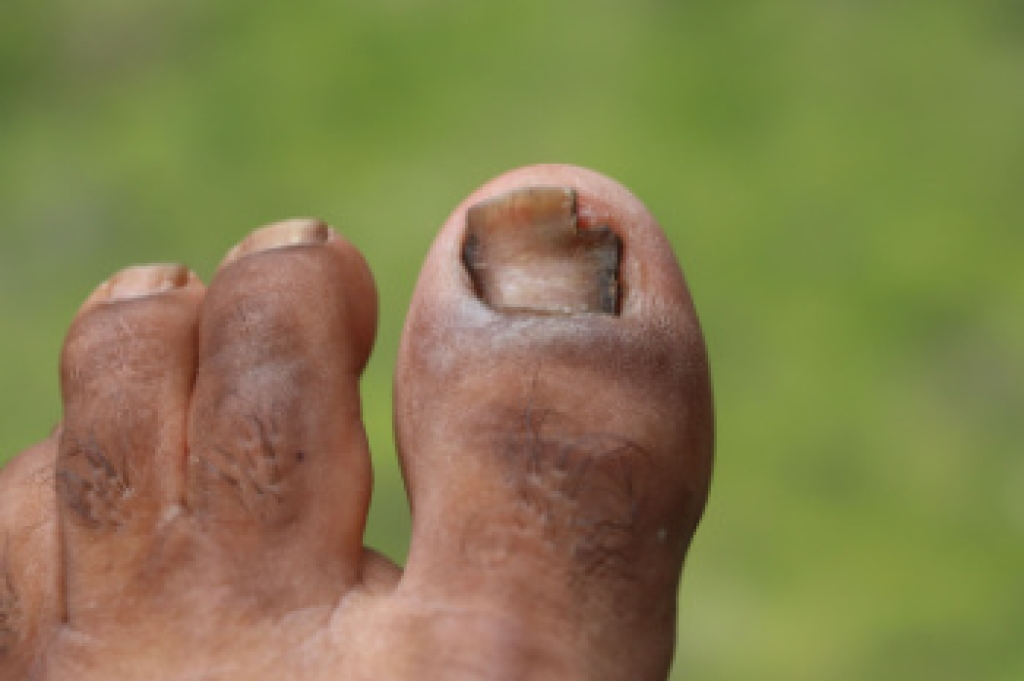
Diabetes can significantly affect toenails, leading to various complications. One common issue is diabetic foot syndrome, where poor circulation and nerve damage result in slow healing and increased risk of infections. This condition can worsen problems like ingrown toenails, where the toenail grows into the surrounding skin, causing pain and potential infection. Diabetics are also prone to toenail fungus, which leads to discolored, thickened, and brittle nails. To manage these issues, it is essential to practice good foot hygiene, including regular nail trimming and keeping feet clean and dry. Wearing well-fitting shoes and monitoring any changes in toenails promptly can help prevent complications and maintain foot health. If you have diabetes, it is strongly suggested that you are under the care of a podiatrist who can help you to manage this condition, in addition to monitoring toenail health.
If left untreated, toenail fungus may spread to other toenails, skin, or even fingernails. If you suspect you have toenail fungus it is important to seek treatment right away. For more information about treatment, contact one of our podiatrists of Brondon Foot and Ankle. Our doctors can provide the care you need to keep you pain-free and on your feet.
Symptoms
- Warped or oddly shaped nails
- Yellowish nails
- Loose/separated nail
- Buildup of bits and pieces of nail fragments under the nail
- Brittle, broken, thickened nail
Treatment
If self-care strategies and over-the-counter medications does not help your fungus, your podiatrist may give you a prescription drug instead. Even if you find relief from your toenail fungus symptoms, you may experience a repeat infection in the future.
Prevention
In order to prevent getting toenail fungus in the future, you should always make sure to wash your feet with soap and water. After washing, it is important to dry your feet thoroughly especially in between the toes. When trimming your toenails, be sure to trim straight across instead of in a rounded shape. It is crucial not to cover up discolored nails with nail polish because that will prevent your nail from being able to “breathe”.
In some cases, surgical procedure may be needed to remove the toenail fungus. Consult with your podiatrist about the best treatment options for your case of toenail fungus.
If you have any questions please contact our office located in Centerville, OH . We offer the newest diagnostic and treatment technologies for all your foot and ankle needs.
